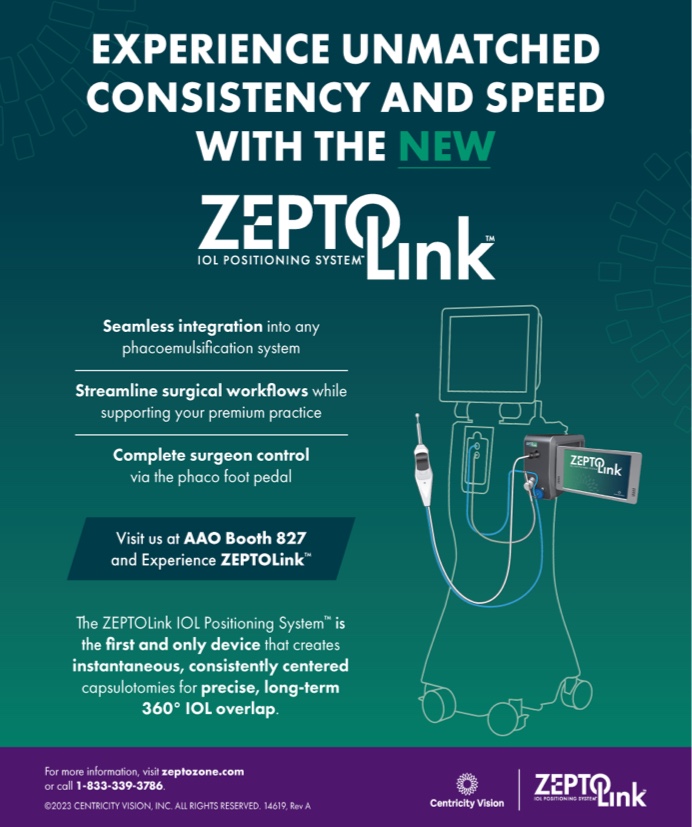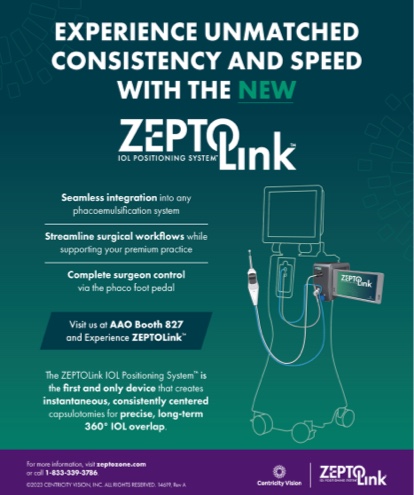What, if anything, do you do differently
for a patient with moderate guttata
and normal pachymetry? How does the
density of the cataract influence your
surgical approach?
—Topic prepared by Steven Dewey, MD.
John P. Berdahl, MD
When assessing a patient with mild Fuchs dystrophy, it is important to complete a thorough diagnostic workup. Even in the setting of normal pachymetry, the patient could have corneal edema. Pachymetry is variable in the normal population and should not be used as the sole determinant for the existence of corneal edema. A discrepancy between ultrasound pachymetry and optical pachymetry using the Orbscan (Bausch + Lomb) may indicate subtle corneal edema.1 For patients with subtle corneal edema, the Orbscan overestimates corneal thickness compared with ultrasound pachymetry. On occasion, this difference helps me to decide between cataract surgery alone and cataract surgery combined with Descemet stripping endothelial keratoplasty (DSEK).1 After a careful examination that includes endothelial cell count and morphology, I explain to the patient with Fuchs dystrophy that the recovery time after cataract surgery may be slower than the typical recovery of someone without Fuchs dystrophy. I also tell the patient there is a chance that the cornea may decompensate, necessitating DSEK.
I have found the femtosecond laser for cataract surgery to be very helpful in patients with mild Fuchs dystrophy. At Vance Thompson Vision, we use the term T-LACS, which stands for therapeutic laser-assisted cataract surgery, when using the femtosecond laser for nonrefractive reasons. Because the femtosecond laser can section the lens without the use of ultrasound energy, the amount of phaco energy required has dropped considerably, making the procedure kinder to the endothelium. As I become more experienced with T-LACS for cataract surgery in Fuchs dystrophy, I am becoming more inclined to remove the cataract alone in hopes of delaying the need for an endothelial transplant. In addition to the femtosecond laser, I always use a dispersive viscoelastic to help protect the corneal endothelium. I perform as much of the cataract surgery in the capsular bag and away from the endothelium as possible. I also target postoperative refraction at -0.75 in anticipation of possible DSEK in the future, because that procedure can induce a variable hyperopic shift of around 1.25 D.
Ayman Naseri, MD
The surgical assessment of these patients is often complex and multifactorial. Assuming that there is no corneal stromal edema, three major variables guide my decision-making process: (1) visual acuity, (2) the type of cataract, and (3) the patient's visual needs and expectations. With respect to visual acuity, if a patient has moderate to severe impairment due to a cataract with no evidence of stromal edema or other ocular pathology, phacoemulsification alone is a reasonable option. I prefer to create a scleral tunnel incision in these eyes so as to minimize corneal striae and to take advantage of a slightly more posterior entry into the anterior chamber and position of the phaco probe. Some surgeons also employ BSS Plus (Alcon Laboratories, Inc.) in cases of confluent corneal guttata. I use a nonstop horizontal chopping technique in cataract surgery, which minimizes the use of ultrasound energy. I also employ a dispersive viscoelastic to coat the endothelium, and I have a low threshold for adding more viscoelastic if there is prolonged irrigation or ultrasound time.
I consider the type of cataract. For example, a relatively soft nucleus with an advanced posterior subcapsular cataract can safely be removed with minimal ultrasound energy, whereas a mature 4+ brunescent cataract may warrant a combined phaco/endothelial keratoplasty procedure. The patient's visual needs and expectations will often determine my approach. In some cases, the guttata alone will limit visual acuity even after the cataract is removed. Although this visual compromise is usually mild (Snellen 20/25-20/30), some patients would prefer to undergo a more complex combined procedure to address this possibility. Many, however, will be quite satisfied with their visual function after cataract surgery alone. As usual, a well-informed patient is the best determinant of a positive outcome.
Robert J. Weinstock, MD
The examination will determine my approach. Specifically, I assess the density of the cataract, the health and thickness of the cornea, the depth of the anterior chamber, and the size of the pupil when it is dilated. All of these factors influence my game plan in the OR.
I will schedule a combined cataract and Descemet stripping automated endothelial keratoplasty (DSAEK) procedure for advanced cases of endothelial dystrophy with preexisting corneal edema and haze. For eyes in which I feel there is a solid chance of maintaining corneal clarity postoperatively, I will proceed with cataract surgery alone. In these cases, I always use a dispersive viscoelastic such as Viscoat (Alcon Laboratories, Inc.) or Endocoat (Abbott Medical Optics Inc.) to protect the corneal endothelium. Oftentimes, especially in eyes with dense cataracts, shallow chambers, and/ or 3+ guttata, I will reapply the dispersive viscoelastic to the endothelium multiple times during the case. In addition, I try my best to do endocapsular nuclear disassembly, phacoemulsification, and aspiration in an attempt to stay as far as possible from the cornea, thereby reducing thermal and ultrasound trauma. If the pupil is small, I will not hesitate to use a pupil-expanding device to facilitate the cataract's removal, and I will also lower the bottle as much as possible without destabilizing the chamber to reduce the trauma of excessive fluid flow through the anterior chamber. Lowering phaco power and raising the vacuum setting are other techniques I employ to reduce trauma to the endothelium. For eyes that may require DSAEK in the future, I usually choose a monofocal IOL with a target of -1.00 D in anticipation of the 1.00 D change that is commonly induced after a DSAEK procedure. At the end of the case, I will not evacuate the dispersive viscoelastic off the central endothelium; instead, I leave the eye slightly soft and let it clear itself.
Section Editor Alan N. Carlson, MD, is a professor of ophthalmology and chief, corneal and refractive surgery, at Duke Eye Center in Durham, North Carolina.
Section Editor Steven Dewey, MD, is in private practice with Colorado Springs Health Partners in Colorado Springs, Colorado. Dr. Dewey may be reached at (719) 475-7700; sdewey@cshp.net.
Section Editor R. Bruce Wallace III, MD, is the medical director of Wallace Eye Surgery in Alexandria, Louisiana. Dr. Wallace is also a clinical professor of ophthalmology at the Louisiana State University School of Medicine and an assistant clinical professor of ophthalmology at the Tulane School of Medicine, both located in New Orleans.
John P. Berdahl, MD, is a clinician and researcher with Vance Thompson Vision and Sanford Health in Sioux Falls, South Dakota. He is a consultant to Alcon Laboratories, Inc. Dr. Berdahl may be reached at (605) 610-8881; johnberdahl@gmail.com.
Ayman Naseri, MD, is an associate professor at the Department of Ophthalmology at the University of California, San Francisco, and chief of the Department of Ophthalmology at the San Francisco VA Medical Center. He acknowledged no financial interest in the product or company he mentioned. Dr. Naseri may be reached at (415) 476-0678; ayman.naseri@va.gov.
Robert J. Weinstock, MD, is a cataract and refractive surgeon in practice at The Eye Institute of West Florida in Largo, Florida. He is a consultant to Alcon Laboratories, Inc. and Bausch + Lomb. Dr. Weinstock may be reached at (727) 585-6644; rjweinstock@yahoo.com.
- Menees A, Thompson VM, Berdahl JP. Orbscan and ultrasound pachymetry measurement comparison in Fuchs endothelial dystrophy. Paper presented at: The Annual Meeting of the American Society of Cataract and Refractive Surgeons; April 24, 2012; Chicago, IL.


